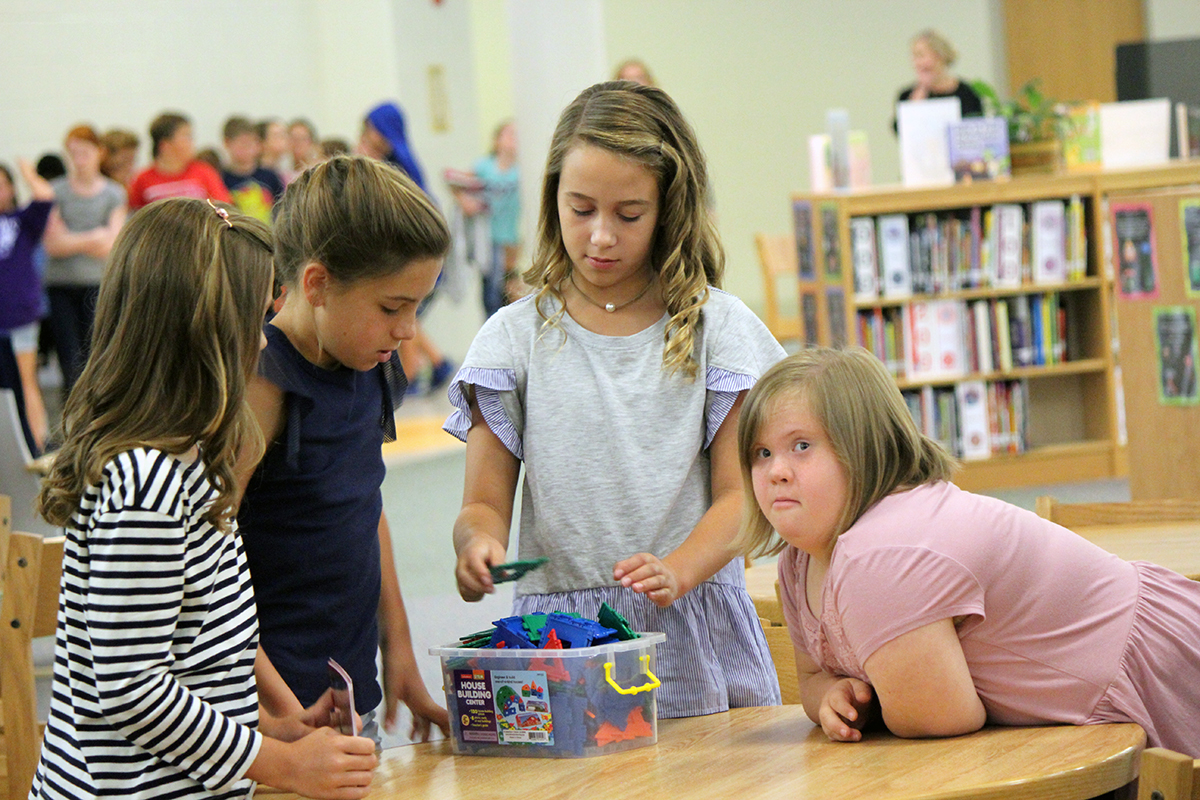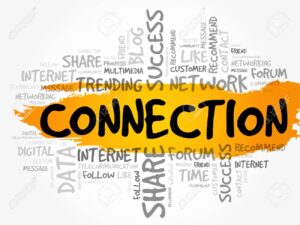by Amanda Corbin
Innovations in Education
For students age three to 21, in both special education and general education, we are already seeing innovation in public education. Dr. Abell predicts these innovations will only increase as time goes on. Examples of some of these innovations include online learning, computer-based remediation, mobile technology, virtual reality, higher education for students with disabilities (SWD), and more affordable higher education.
Online Learning
It has been around for many years, but Dr. Abell pointed out that “the role it can play for SWD is one that’s really starting to be looked at more closely.” For SWD, it can be easier to get them connected so they can work at home and work at their own pace. Online learning can also take place in a regular school setting or an alternative school setting. Unfortunately, Dr. Abell said, “it’s also easy to leave them and not give them the amount of support required… So online learning can be very helpful, but still needs teacher or paraeducator support to facilitate the online learning process for them.”
Computer-based Remediation
At some point in their education, any student can struggle with grasping specific concepts or learning certain facts. Computer-based remediation via what’s called “intelligent learning” can help students use computers as a study tool. Programs adjust the learning process and material based on the student input. As an example, Dr. Abell explained,
A student may be working on geometry, so they go through this computer module, and it takes a test that they haven’t scored well on, and the system then could then create a learning program just on the areas that they didn’t do well on. And that might bring up some videos, some tutorials, maybe an interactive learning unit that allows them to see how the equations worked, but the videos in conjunction with some of these other active learning components really allow those students to maybe grasp the concepts in a way they didn’t when they learned material the first time.
This kind of computer-based remediation via intelligent learning is already in place to give students extra, more personalized support. It will likely continue to grow.
Mobile Technology
The growth of mobile technology in classrooms has been driven in part by the lower cost of some mobile devices such as iPad and Android tablets. Powerful apps are included, and the automated assistants (Google Assistant, Siri from Apple, etc.) are especially helpful because they allow students to speak commands into the device. “The mobile technology platform is only going to grow,” Dr. Abell said. “That will make a big difference for our students. They can use in the school as well as at home.”
Virtual Reality
Although it is still a relatively new technology, Dr. Abell said, “virtual reality and the role that that can play with our SWD, I think, is really untapped.” Dr. Abell explained that big companies are already investing in virtual reality technology for entertainment and social media experiences, so it’s only a matter of time until that technology is included in education as well. “Having virtual learning environments are, I think, just the beginning of a whole new phenomenon in education that we’ll start to see unfold in the coming decade,” he said.
Higher Education for SWD
Dr. Abell pointed out that there is a variety of SWD attending college now and that’s an area where we’re starting to see more and more growth. “I think it centers from the philosophy of inclusion,” he said. Additionally, universities have more supports in place for students and on-campus disability centers make college attendance much more possible than before. “We’re seeing more opportunities for SWD who maybe never thought they could be a part of college programs now attending,” he said.
More Affordable Higher Education
Another innovation that deals with the role of higher education is trying to address the cost of a college education. “That’s really challenging,” Dr. Abell said. The goal is to help students finish college without the burden of significant debt, so students are encouraged to take college courses from an affiliated community and technical college while in high school. “That’s actually shaved one to two years off of a college degree and you’re able to hit the ground running when you transition to a four-year college only needing two years to graduate,” Dr. Abell explained. “I think that’s going to help our SWD in ways that are just now starting to reveal themselves.”
Disruptions in Education
In addition to the innovations, Dr. Abell said, “We’re already starting to see things that have an impact on education. Some of it’s policy, some of it deals with programming.” He went on to say,
I don’t believe these are going to go away quickly. They’re going to take a lot of smart minds, policymakers, leaders, legislators, governors, and national experts to really put good thought into these disruptions and begin to implement various policy, best practice, and innovations, in hopes of moving these disruptions into more solution-based practices.
Among these disruptions are increased school accountability, a more diverse student population, fewer teachers, more violence and trauma, the need for mental health support, and decreased funding.
Increased Accountability
The level of accountability school districts and educators are being held to, either through student test scores or data that show student success, Dr. Abell called “the reality of our time.” He said, “There’s more scrutiny on public education than ever for making improvements in student outcomes. Teachers are really under the gun to show change and progress with students, as are administrators.” Helping, schools, administrators, and teachers learn to deal with that scrutiny, he said, “will be critical in the coming years.”
Diverse Student Population
In addition to SWD, other student minority groups are growing. Students have a variety of needs the education system has not dealt with before. “The diversity issue is one that’s been here for a number of years,” Dr. Abell said. “But that’s only going to increase and grow throughout the country.” He said the diversity of the student population requires a variety of supports as well as cultural sensitivity to meet those students’ needs.
Fewer Teachers
A smaller number of people are going into the teaching profession and fewer teachers entering special education. Having qualified teachers is a growing challenge, especially in certain parts of the country. “That’s going to continue to be a disruptive agent within the public education system,” Dr. Abell. “Without well trained teachers, paraeducators, we can’t educate the next generation.”
Trauma and Violence in Schools
Everyone is aware of the tragic increase in school shootings and violence occurring within school walls. Dr. Abell fears this is a growing trend but sees public education as a place to provide support and trauma-informed care (an approach that emphasizes safety, trustworthiness, choice, collaboration, and empowerment). “In helping students, faculty, and administrators deal with the increased level of violence and trauma, schools are going to be paramount,” he said.
Mental Health Needs
The need for mental health services also has its place in education. “We have to have systems in place for mental health services in the schools as well as outside the schools more than ever with the growth in so many traumatic events across the country,” Dr. Abell said. “It has a huge impact on the student population.” He explained that trauma outside school affects students in school as well. “When students are impacted by levels of trauma,” he explained, “if they witnessed a shooting in their neighborhood, or they had some type of domestic violence situation in their household and they witnessed that, ultimately, they do bring that to school with them and we have to look at ways to deal with that.” Teachers in turn are also affected by student trauma.
By bolstering mental health services in the school… helping teachers have some coping strategies for themselves that they can share with their students, having more active roles for outside mental health services so they can come in and provide services, and the traditional school counselors being able to deliver some level of support services that they might not be able to do, really builds a therapeutic milieu around the public K-12 system that just isn’t there now.
While educators can’t replace traditional therapeutic or psychiatric services, because school is one of the most effective places that students can be safe and get support, it makes sense to incorporate mental health services into the public school setting. It also keeps educators aware of situations affecting students.
Decreased Funding
Decreased funding for education is another reality of our time. Dr. Abell sees this as an opportunity for innovation. “Dollars are getting tighter and tighter,” he said, “so we need to look at different innovative ways to be able to support learning that maybe we haven’t used before.”
To provide support for student mental health, different funding sources such as Medicaid could be tapped into. That would allow agencies to work with a select number of students who may be in need. Dr. Abell also pointed out the potential of “shifting funds over to utilize another counselor or school nurse to do some level of monitoring or triage, as far as mental health is concerned, for various students.”
“Another possible innovation for student mental health is virtual counseling…” Counselors or other experts could virtually deliver a lesson on coping skills for example, or how to deal with trauma, to a whole classroom.
“There are some affordable things out there,” Dr. Abell said, “but the challenge here is to really look at things innovatively and with a good eye to high quality research-based practices.”



